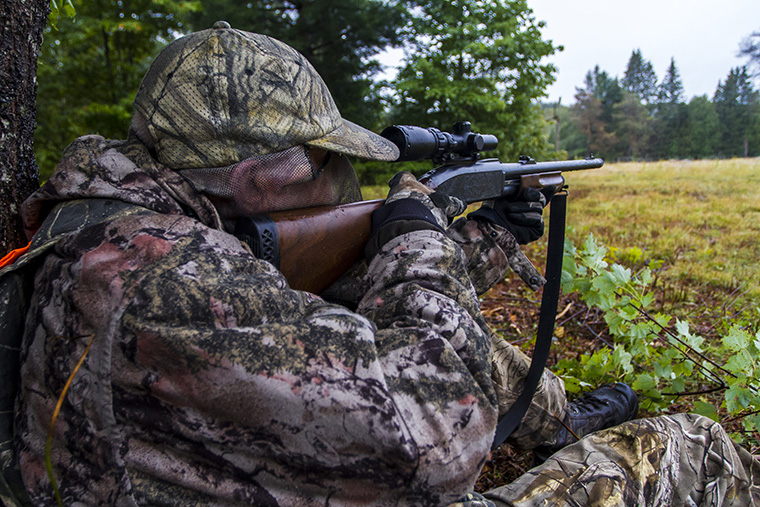
For years, when talking to others about the spring hunt for gobblers, I often got the response, “I’d love to try a wild turkey dinner, but I haven’t taken the turkey course.”
Well, in 2017 the MNRF eliminated the need to take a separate wild turkey hunter education course, so Ontario hunters can now lock wattles with a spring tom or jake if they possess a hunting version Outdoors Card and a turkey licence tag and seal.
With expanding turkey-hunting opportunities, a growing population of birds, and the recent opening of new seasons and WMUs, these are the good old days of turkey hunting in Ontario. Here’s how to go one-on-one with a beard-swinging tom.
Choosing decoys
If you’re a novice hunter or have limited calling skills, decoys may give you the confidence to keep hunting while you build calling skill. But, thousands of toms have been harvested without decoys.
Decoys rule with bowhunters, because when toms commit to a fake hen or jake, their focus locks right in. This reduces the chances of the hunter being picked off when drawing the bow.
Pop-up blinds and decoys go together well, too. You’ve already gone to the effort of setting up a blind, so taking a few more minutes to stake out some dekes is worth it.
Buy the most realistic-looking decoys you can afford. Realism is about the correct colors, shape, and posture. Dented, faded, flattened or unnaturally shiny decoys will tip off wary toms.
Scout to find out where turkeys like to be and put your dekes there. Don’t set up where they never go, expecting them to reverse their pattern.
Decoys give visual confirmation to a long beard that the calling he heard is authentic. He will be less suspicious, but may still hang up out of range. To prevent this, go against conventional wisdom that says to put decoys where they can be seen for miles and set them up where they can’t be seen too soon. Set them up where he has to keep coming to your calls before he can see them up close. I mean, set up just inside the bush rather than out in the field, or on the reverse slope of a hill rather than on top of the hill.
Place them about 15 yards from your blind or set-up tree. That way, if he hangs up, he’ll still be in range at 30 yards for your gun or bow. If you have verified that you have a lethal pattern at 40 yards, you can set them out a little farther.
Placing decoys
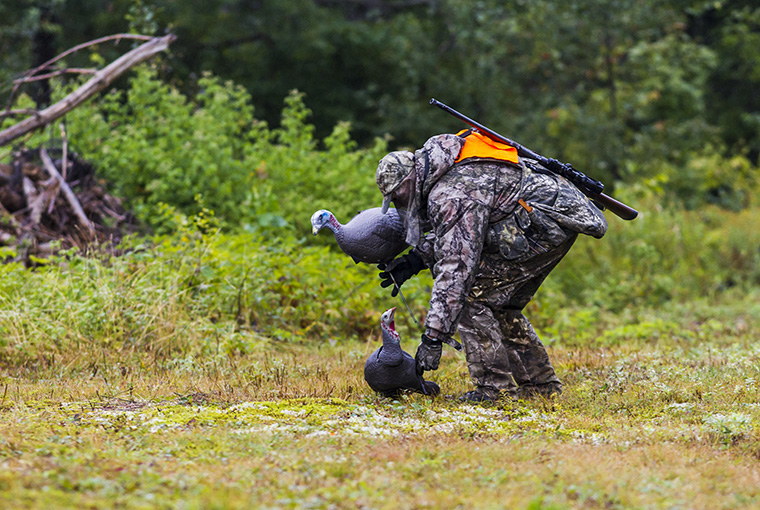
Next to location, the actual placement of the decoys on the ground matters most. When setting up multiple hen decoys, keep them spaced about 10 feet from each other. Turkeys that crowd together tightly look nervous and won’t attract new joiners.
Strutting-tom decoys with full tail fans work to bring in dominant toms but may scare off sub-dominant toms and jakes. The best time to use them is early in the season when toms are still sorting out their place in the social order and will come to investigate and fight with a new tom. Late in the season when hens are done breeding and busy with nesting duties, the strutter decoy is a good gambit for dominant toms that can’t find hens but are still eager for a scrap.
When hens are breeding, set up some hens with a tom to incite the boss bird to come in and run off the competition. Another deadly combo to incite a tom to come in blind with rage is a jake decoy with a hen or hens.
Mating pairs of a squatting hen with a tom or jake behind her or on top of her can be the final straw for a cautious but jealous tom. Put the belly-down hen decoy and tom facing toward you because the jealous long beard will approach the tom deke eye to eye and tail to you, reducing the risk of it seeing you. If you use only a squatting hen, face it away from you because the tom will approach it from behind with tail toward you.
With a convincing decoy set-up, you could have a front-row seat to a fascinating show of turkey behaviour. Amorous toms, totally duped by the decoys, will strut, display, fight, and attempt to mate with decoys. Their behaviour can be so intriguing you might forget to shoot.
Posture matters
Posture or body language communicates a lot to turkeys.
For hen decoys look for a calm, head-down feeding posture or belly-down teasing posture rather than a head-up alert stance.
With a jake you want a head-up, cocky look to incite jealousy in a tom.
As far as tom dekes go, the full strut is an invitation to fight that will bring in dominant toms.
Pattern your gun
The goal of patterning a gun is three-fold: to verify your gun hits where it’s aimed, to find out which shell prints a tight, uniform pattern with the choke you will be using, and to determine how far downrange it can throw a lethal pattern.
Generally, smaller No. 6 pellets pattern better through tight, extra-full turkey chokes. With less constriction in the choke you may get better patterns with No. 4s or 5s. Every barrel is unique, so try several brands and shot sizes.
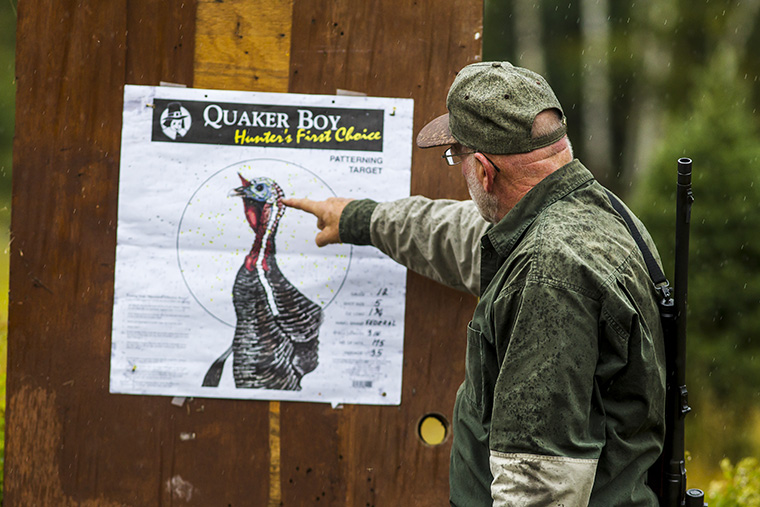
Use turkey-patterning targets with the image of a turkey’s head, neck, and outlined spine and brain. Only shoot once at each target. Aim at the neck where the feathers start. Shoot off a bench rest or while sitting on the ground leaning against a tree with the gun supported on you knee, as you would while actually hunting. Don’t try to pattern by shooting offhand because you need to remove human error from the process. You won’t get accurate results if you wobble off the target when you pull the trigger.
The maximum lethal range for your set-up is the farthest yardage it will consistently put five pellets in the brain and spine, or 100 pellets in the 10-inch circle where you aimed.
Rather than wounding out-of-range birds, hone your calling and set-up skills so you can call them in close. Keep that gobbler coming by choosing your set-up carefully. Use wrinkles in the terrain to set up so he can’t see you until he’s in range. If you set up poorly and he hangs up out of range, quit calling and let him walk away, then move to a better location.
Shoot each brand of shell at 20, 25, 30, and 35 yards. Record the pellet hole count in the spine and brain of the target (or pellets in a 10-inch circle, centred on the head and neck).
Scout for food sources
In the weeks before the season, locate turkeys by spotting them from the road or sneaking through the woods. Move slowly and quietly while listening hard for their calls and looking for tracks, feathers, droppings, wing-drag marks, and scratching.
In the first two weeks of the season, turkeys feed heavily on leftover crops and waste grain, favouring corn and soybeans. Later in May, they feed on the tender shoots of new crops and natural plants. When insects begin to emerge late in May, they scratch and peck along the forest floor or in short grasses looking for them.
Dedicated turkey hunters ply their trade every year, honing their skills — while both succeeding and being fooled — and learning more about turkey hunting and bird behaviour.
Hopefully, this primer has laid a solid foundation on which you can build your turkey hunting knowledge.
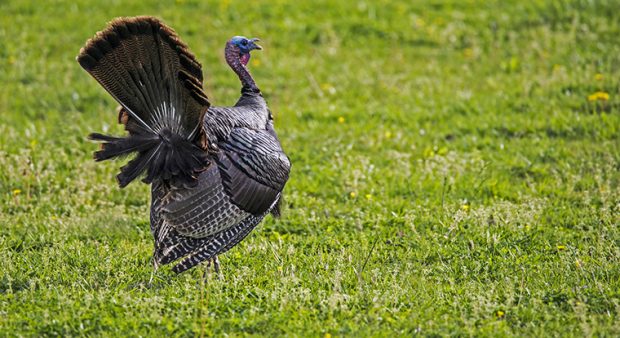
More tips
Concealment
When a long beard starts coming to your call, he is on high alert, and also looking hard for a hen, so now you must fool his eyes, too. You can keep out of sight using:
• A pop-up blind (costs money and you’re restricted to one spot)
• A natural blind made from blow downs or foliage (free but takes time to build limits your mobility)
• Head-to-toe camo including face mask and gloves (can move around until you find a tom). Be sure to sit in front of a wide tree and don’t move when he can see you.
Roost your tom
Spring toms advertise their location by gobbling from their roosting limb when they fly up in the evening. So, locate a roosting tom the evening before your hunt by listening from the edge of your hunting area. If you don’t hear a tom gobble, try some loud yelping to see if you can coax a reply and get a lock on his position. Then in the morning while it’s still fully dark, sneak to within 70 yards of him, and set up to call at legal light.
Learn from my mistakes
More than a few toms lived to gobble another day because I didn’t understand the importance of patience. Too often, I stood up after an hour of calling, only to scare off toms that were sneaking in silently. Or, I moved to another set-up, only to hear a tom gobbling from the location I had just left.
The first element of patience is comfort. Find a seating system that lets you sit comfortably for three or four hours. Next is confidence, based on scouting, that turkeys are within earshot, and based on practice, that your calls sound authentic.
Learning curve
To quicken your turkey-hunting learning, hire a guide or go out for your first few times with a friend who has turkey-hunting experience.
Jakes, too
While many hunters focus on bagging a big tom, jakes, which are young male turkeys, are legal bearded game, too. The immature birds are also generally less discerning, and more willing to play than toms; a perfect adversary for a novice turkey hunter — and they taste great, too.


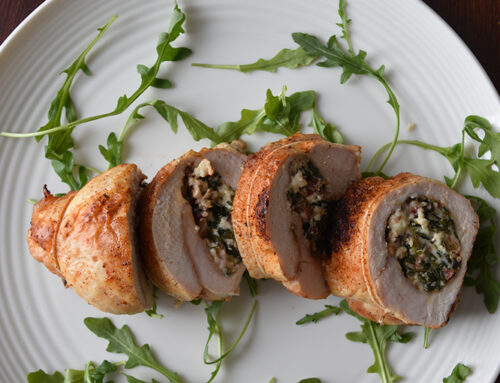
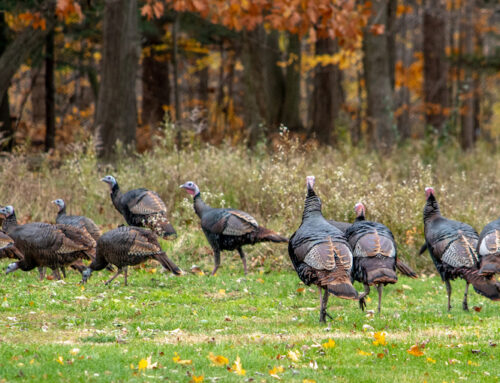
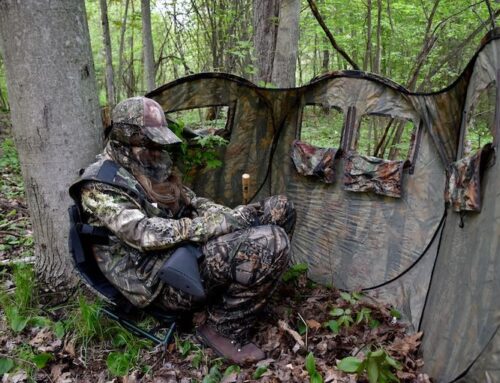
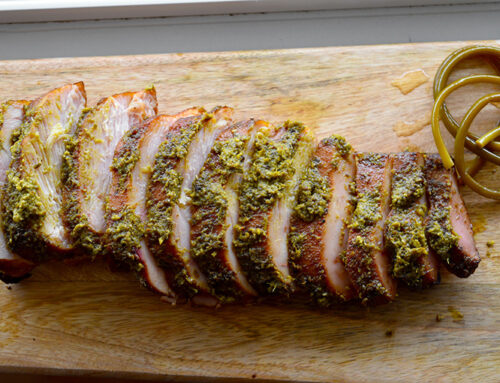
Leave A Comment